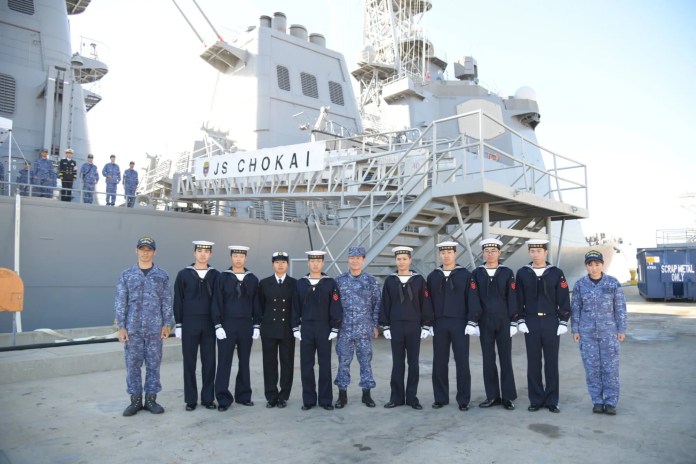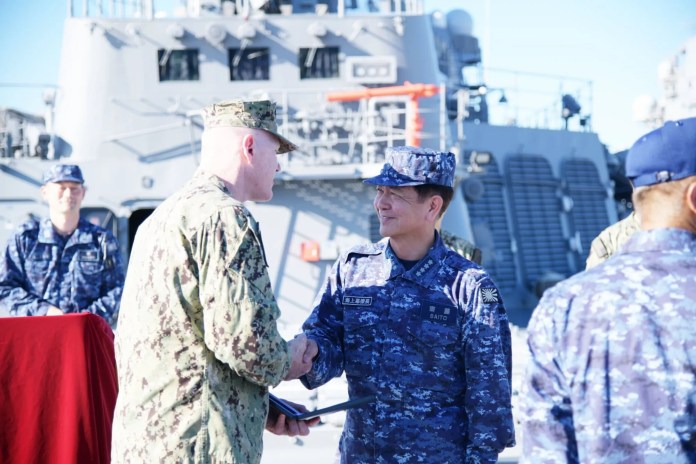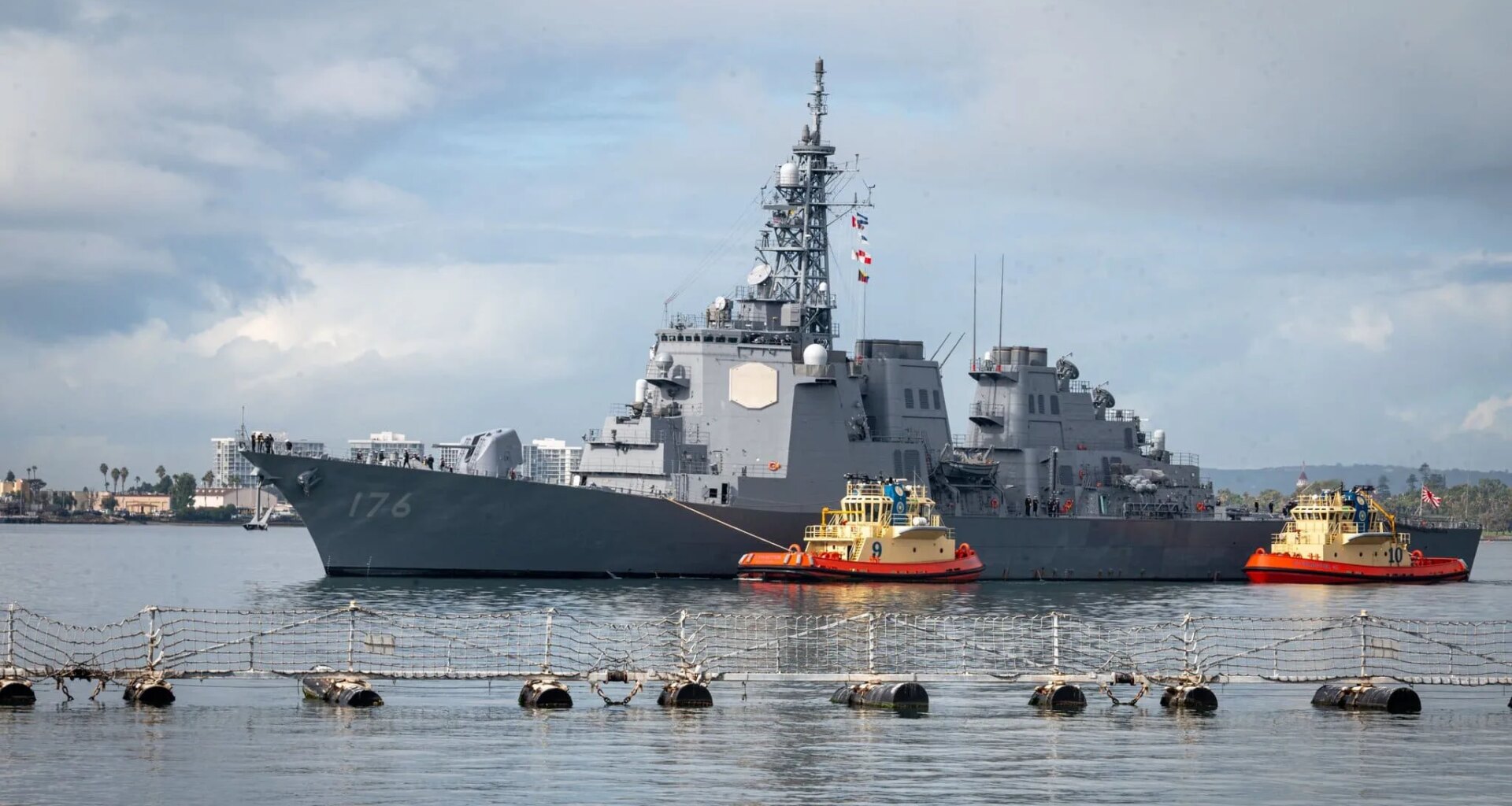Toward the end of October, the Japan Maritime Self-Defense Force reported that the destroyer JS Chōkai had arrived in the United States to be equipped with new Tomahawk cruise missiles, which will significantly expand its long-range strike capabilities. The vessel arrived specifically in the city of San Diego (located in the state of California), where it was received by personnel from the U.S. Navy and by Chief of Naval Staff Saito, who was conducting an official visit to the United States.
 JS Chōkai – Fuerza Marítima de Autodefensa – Japón
JS Chōkai – Fuerza Marítima de Autodefensa – Japón
Through the same statement published on the service’s social media accounts, it was also indicated that Japanese sailors are expected to begin a training process in the use of the weapon system, which will be carried out with the support of the U.S. Navy. According to previous reports, Tokyo’s plans involve the destroyer and its crew remaining in the country for an estimated period of one year, providing sufficient time for the ship to undergo modernization of its systems as well as structural modifications. Over the course of next year, test firings of the Tomahawk missiles are also expected, a key step toward obtaining the corresponding certification.
In this regard, it is worth recalling that these developments are part of a broader plan by Japan to acquire Tomahawk missiles to equip its ships, a process expected to extend from 2025 to 2027. In this way, the Asian nation seeks to strengthen its long-range strike capabilities while its industry works on the development of an indigenous alternative — an effort that, in addition to offering enhanced deterrence amid China’s growing naval presence in the Indo-Pacific region, will also provide a boost to the local economy.
 JS Chōkai – Fuerza Marítima de Autodefensa – Japón
JS Chōkai – Fuerza Marítima de Autodefensa – Japón
Finally, it should be noted that the arrival of the aforementioned cruise missiles has been part of Japan’s strategic plans since 2022, when the government considered acquiring them as part of the review of its National Security Strategy. By 2023, the United States issued the corresponding authorization to proceed with the sale of up to 400 units, demonstrating the close defense relationship between Tokyo and Washington. The final agreement was signed in 2024, with Japan investing $1.7 billion, which includes U.S. technical assistance and training to ensure a smooth transition to the new weapon system.
Image credits: @JMSDF_PAO on X
You may also be interested: After five months at sea, the training vessel Kashima and the destroyer Shimakaze of the Japan Maritime Self-Defense Force returned to Japan

